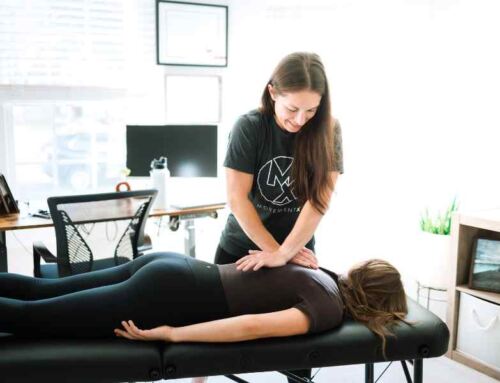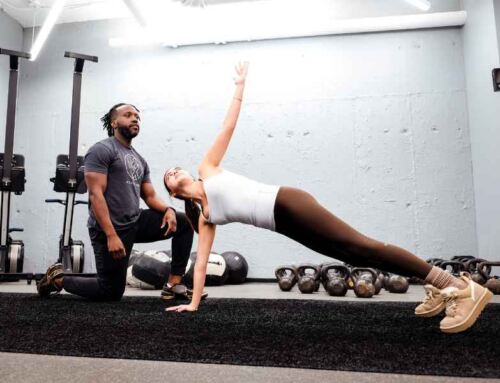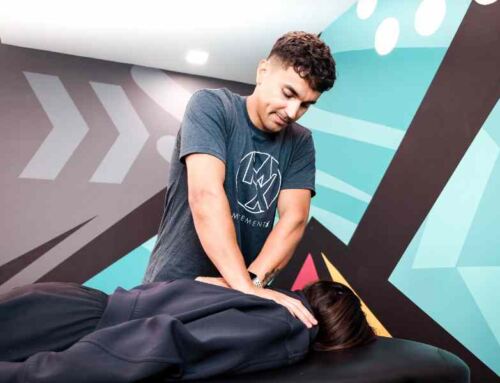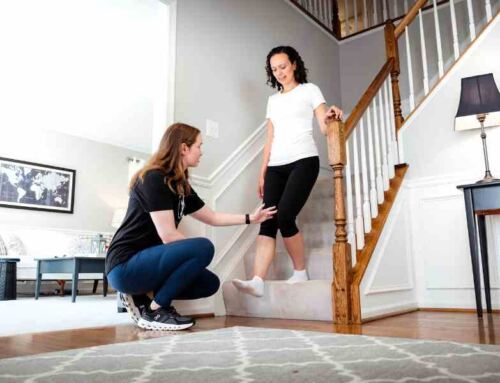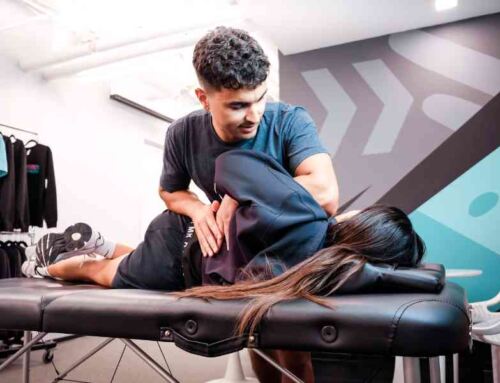82% of Patients Improve Plantar Fasciitis With This Technique
Plantar fasciitis is the most common foot condition treated by healthcare providers, affecting around 2 million Americans per year and up to 10% of Americans over their lifetime (1).
The plantar fascia is a thin ligament at the bottom of the foot which connects the heel to the front of the foot. Plantar fasciitis relates to the inflammation or irritation of the plantar fascia due to excessive or repetitive strain over time.
Pain related to plantar fasciitis can feel sharp and stabbing, tender and burning, or intense and radiating, and it is often worse in the morning or after prolonged activity. Plantar fasciitis is common in runners, pregnant people, and those with high arches or flat feet.
While heel pain can feel discouraging, there are several techniques you can use to diminish pain. In fact, one study found that over 82% of patients experienced resolution of symptoms with conservative management emphasizing stretching (2).
Here are five simple stretches for plantar fasciitis you can do at home to help reduce heel and foot pain…
5 Stretches for Plantar Fasciitis
Improving the flexibility and strength of the plantar fascia ligament through stretching is an effective way to reduce the pain caused by plantar fasciitis, and MovementX physical therapists are here to help. From assessing how you walk to hands-on manual therapy techniques and teaching you personalized stretching and strengthening exercises, our highly specialized and carefully chosen experts will help you get back to pain-free movement.
1.) Calf Stretch
Tight calf muscles can contribute to plantar fasciitis. Targeting the gastrocnemius and soleus muscles, this stretch helps loosen your calves and reduce your foot pain.
Standing an arm's length away from a wall or stable chair, step your right foot back behind your left. With feet forward and both heels on the ground, slowly bend your left leg while keeping the right straight. Hold the stretch for 30 to 60 seconds, then repeat on the other side. Perform 2-3 sets on each side.

2.) Seated Toe Stretch
Sitting upright in a chair, cross one leg over the other, placing your ankle on top of your knee. Slowly pull your toes backward until you begin to feel the stretch along the bottom of your foot. Hold for 30 seconds, then repeat on the other side. Perform 2-3 sets on each side.
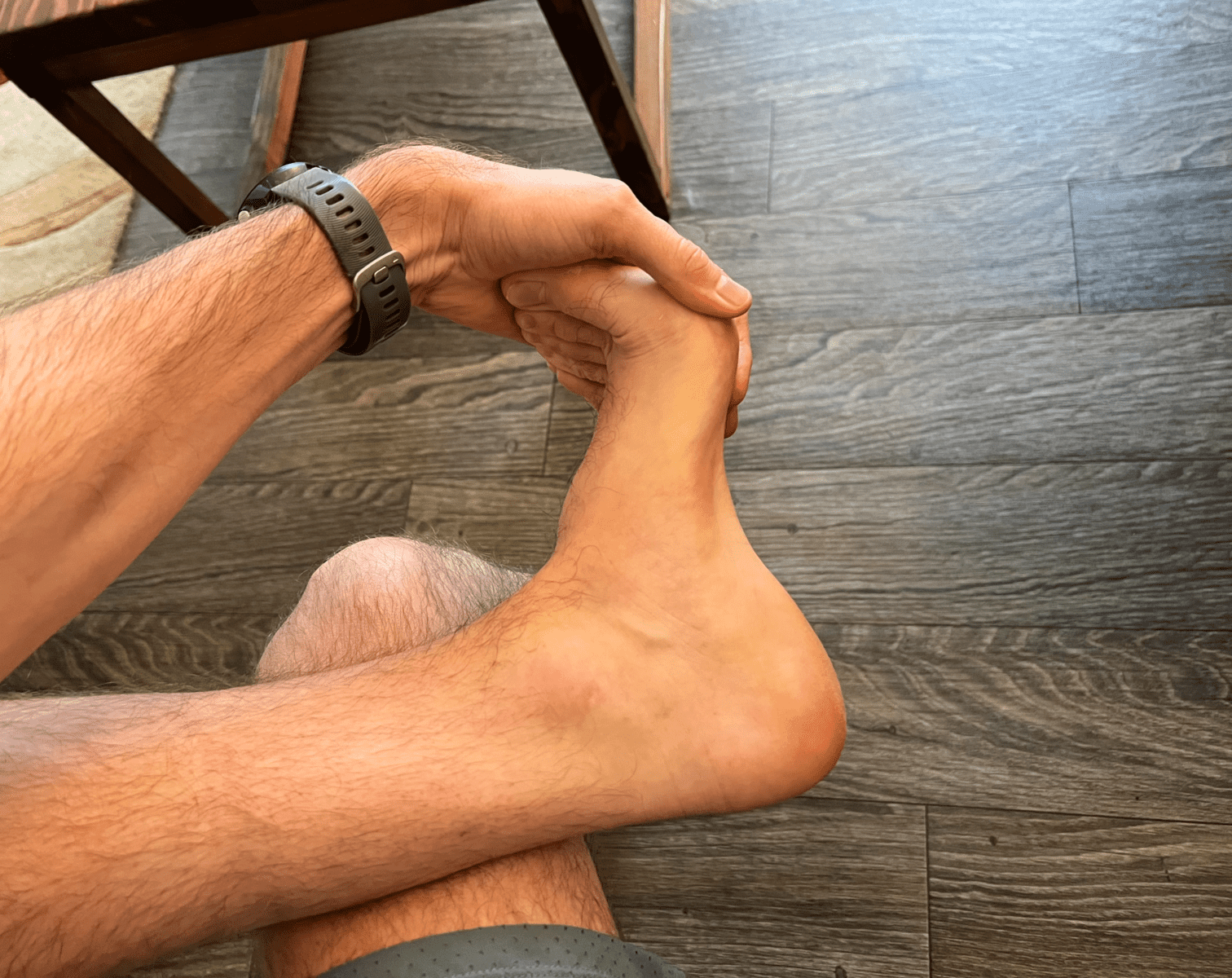
3.) Towel Scrunches
For another seated exercise, place a towel under one of your feet. Reach and spread your toes outward, then begin scrunching the towel towards you for the entire length of the towel. Be sure to use just your toes for this exercise, not your entire foot. Unravel the towel and repeat once more with this foot before moving the towel under your opposite foot.
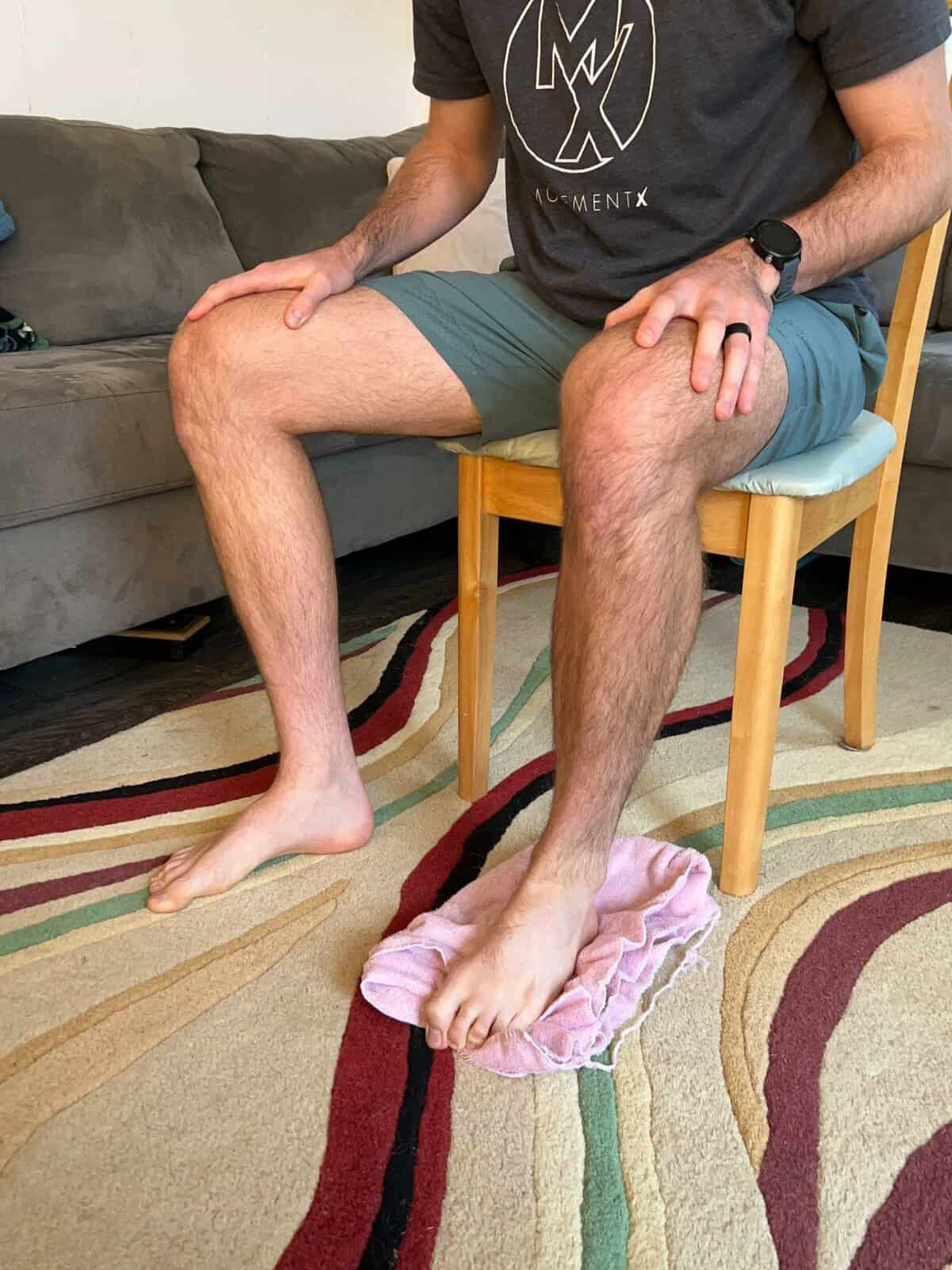
4.) Frozen Water Bottle
First, fill and freeze a water bottle. Once the water is frozen, place the water bottle under your foot and gently roll it back and forth along the arch of your foot. Feeling a gentle stretch throughout your foot, repeat 10 times before switching to the other foot. Not only does this stretch your foot, but the ice also helps reduce inflammation.
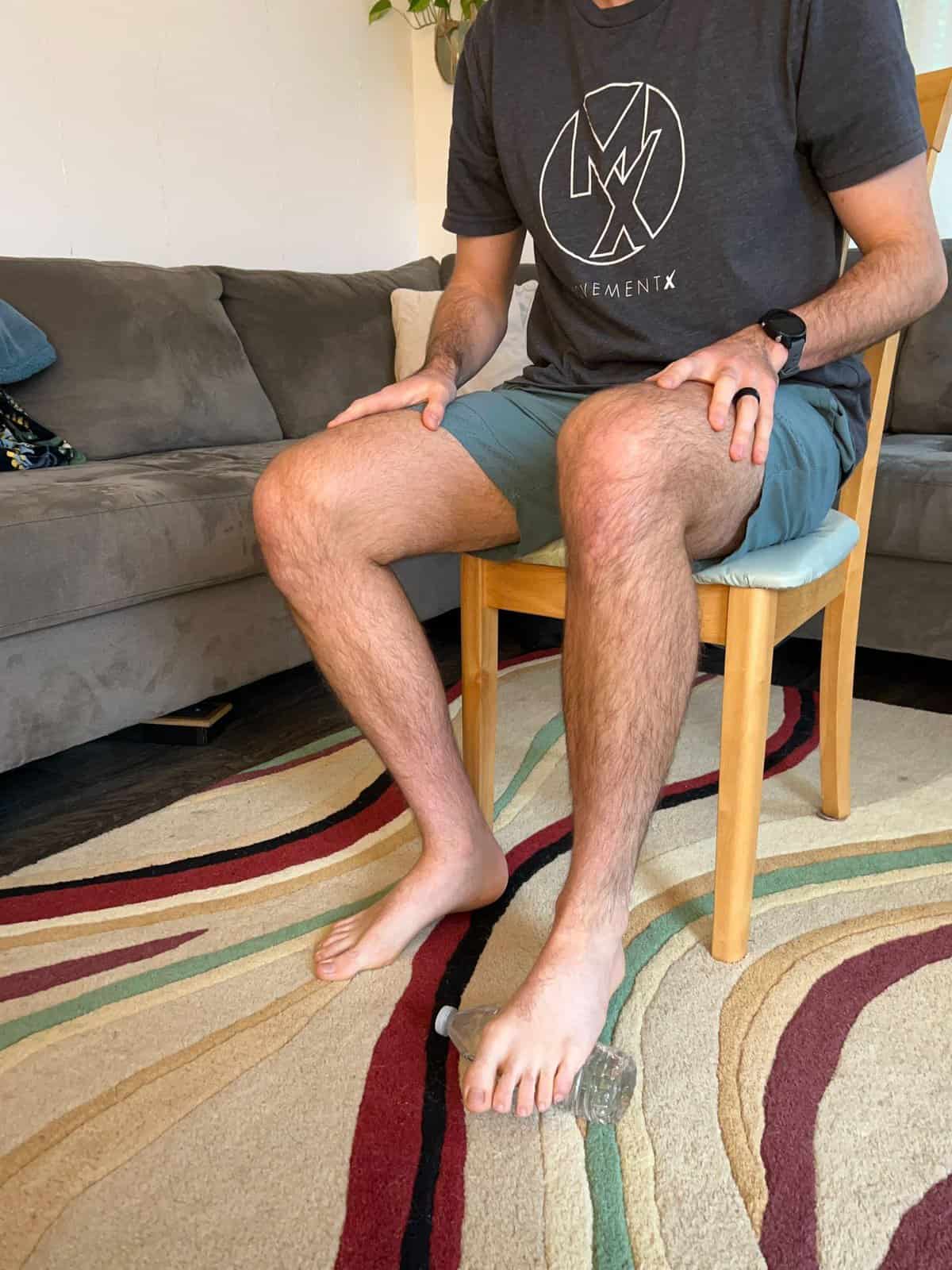
5.) Heel Raises
Stand next to a sturdy chair or countertop with the feet shoulder width apart. Rise up onto the toes, lifting the heels as high in the air as possible. Then, slowly lower your heels back down. Perform off the edge of a step for an added challenge of moving through increased range of motion. Repeat this heel raise motion 10-15 times for 2-3 sets.
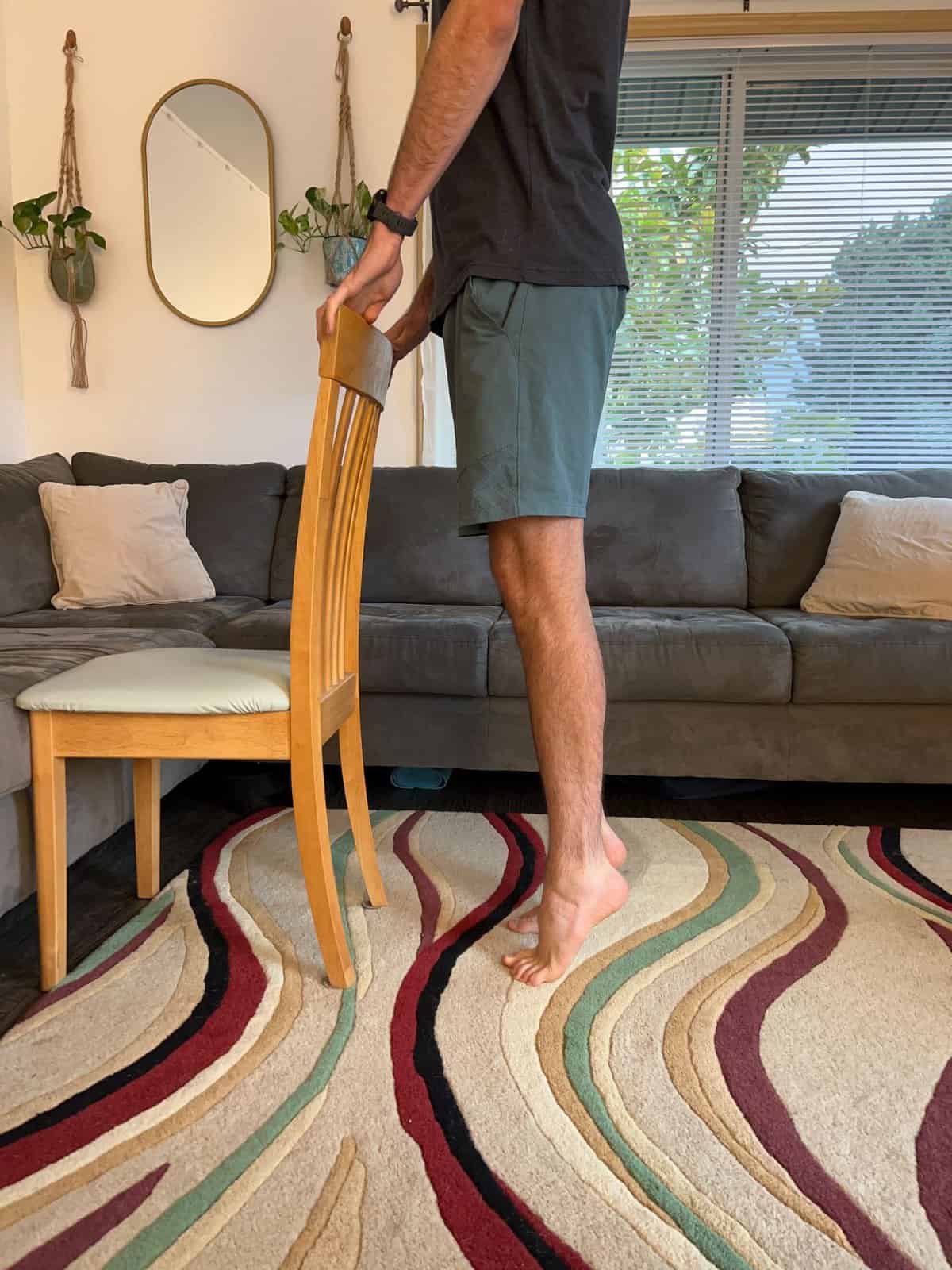
Are you a runner or active individual in Seattle or one of our other locations interested in learning individualized treatment strategies for plantar fasciitis?
Schedule a session with a MovementX physical therapist today
References:
- Martin RL, Davenport TE, Reischl SF, McPoil TG, Matheson JW, Wukich DK, McDonough CM; American Physical Therapy Association. Heel pain-plantar fasciitis: revision 2014. J Orthop Sports Phys Ther. 2014 Nov;44(11):A1-33. doi: 10.2519/jospt.2014.0303. PMID: 25361863.
- Wolgin M, Cook C, Graham C, Mauldin D. Conservative treatment of plantar heel pain: long-term follow-up. Foot Ankle Int. 1994 Mar;15(3):97-102. doi: 10.1177/107110079401500303. PMID: 7951946.
About the Author
Dr. James McAfee is a physical therapist with MovementX in Seattle, WA. A graduate of both UCLA and USC, James McAfee believes that healthy movement across the lifespan relies on a healthy lifestyle. He helps clients reach their movement potential using an individualized approach around education, manual techniques, exercise, sleep, diet, and stress management.



